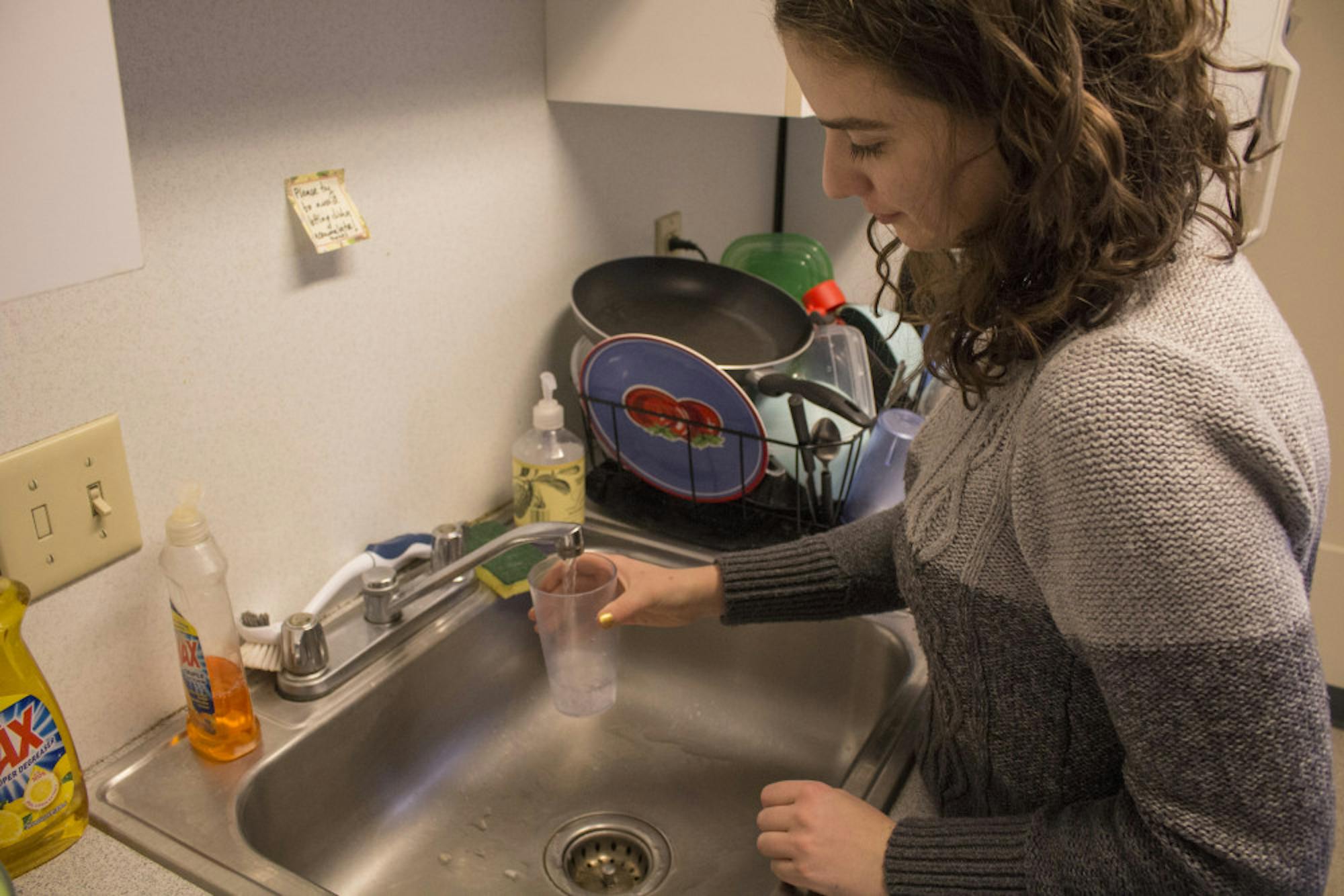No dangerous lead quantities are present in any of the residential buildings tested for water quality, according to a message set to be sent out to the Tufts community Friday morning by Tufts Vice President for Operations Barbara Stein and Dean of Student Affairs Mary Pat McMahon.
This update comes as a follow-up to the email Stein and McMahon sent out to the Tufts community Dec. 12 to notify students and faculty that a student would be testing water quality in 34 buildings on the Medford/Somerville campus, 17 of which were academic and 17 of which were residential, according to the more recent message.
Caitlin Duffy, a senior studying environmental engineering, conducted the testing over winter break. Duffy said she chose to sample water from outlets most likely to provide water for human consumption.
“Within the buildings, I wanted to pick outlets that would be used for consumption, so [I tested] kitchen sinks, bathroom faucets where you brush your teeth, or water fountains and bubblers,” she said.
Tufts contracted a third-party laboratory approved by the Massachusetts Department of Environmental Protection to verify the the lead content of four faucets that at first yielded suspicious results, according to this morning's email. The faucets were in Davies House, also known as International House (I-House), and Hillsides Apartments, the only two buildings where Duffy had initially found questionable levels of lead. Based on the laboratory's analysis, the four sinks in question were determined to be safe for use.
When Duffy first found suspicious results, and before the sinks were ultimately found to be safe, Tufts Environmental Health and Safety (TEHS) Director Stephen Larson sent an email to residents of I-House on Jan. 12, explaining that two faucets may contain lead levels above the recommended 15 parts per billion (ppb).
According to Larson's letter, samples were collected and tested after the water had been undisturbed for 6-10 hours. The letter added that the lead concentrations of two first-flush samples were 19.7 ppb and 35.1 ppb, both above the recommended 15 parts per billion (ppb) and therefore unsafe for drinking and food preparation, though safe for other activities. According to Jason Erbach, Environmental Manager for TEHS, the "first-flush sample" refers to water collected from a faucet that has not recently been used.
Erbach sent a similar letter to the residents of Hillsides Apartments on Jan. 15 which identified another two faucets that produced water samples unsafe for drinking or food preparation.
According to the letter, the university responded to the initial test results by covering the sinks in question, distributing bottles of water for residents' use and initiating a second round of independent testing to verify Duffy’s findings. Nicolas Avalle, a sophomore and resident of Hillsides, said that each apartment was given a store of water for daily use while the university conducted its third-party lab research.
Avalle said that the university provided his apartment, where ten people live, with twenty water bottles for the duration of the interim period.
According to Avalle, Hillsides residents received an email yesterday to notify them that staff would be entering common areas in the building to install water coolers. However, Tufts' Executive Director of Public Relations Patrick Collins stated that the water coolers had been ordered before the lead levels in the building's water were determined to be safe.
Sopuruchukwu Ezenwa, a senior and the manager of I-House, verified that his residents had also received bottled water.
“So far, my residents seem calm about things, especially with the detailed report [in Larson's email] and alternative water supply provided to us,” Ezenwa told the Daily in an email.
Erbach further explained that the federal Environmental Protection Agency’s Safe Drinking Water Act requires water providers to provide their customers with water of sufficient quality so that 90 percent of customers receive water with less than 15 ppb of lead. In the case of Tufts University, this responsibility falls upon the Massachusetts Water Resources Authority (MWRA).
According to the 2016 MWRAAnnual Test results, which are available online, the 90 percent lead level in both Medford and Somerville was below 15 ppb.
Duffy stated that stories of municipal water quality in other U.S. cities inspired her research here at Tufts.
“Ever since the crisis in Flint, Michigan, the problem of lead in U.S. water infrastructure has been a focus in many of my classes," Duffy said. "I wanted to apply my learning to a real-world case, and Tufts seemed like a great place to start."
Duffy said she hopes her research will promote awareness of water quality issues on campus.
“With this research happening and ... a lot of people ... talking about it, [water quality] has been brought to the forefront of people’s minds,” she said.
Water-quality investigation finds safe levels of lead

A Hillsides resident pours herself a glass of tap water in her Hillsides suite on Jan 24.





